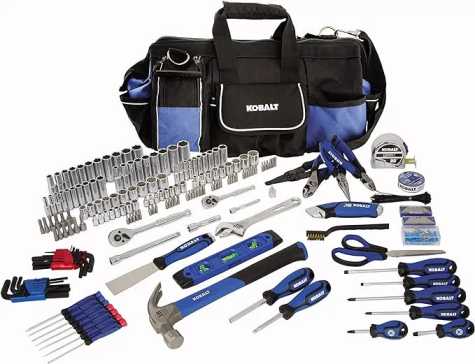If you’re diving into DIY projects at home, understanding how to use your tools is just as important as owning them. A strong foundation starts with a well-organized toolbox — and few options are as reliable and efficient as the Kobalt tool box. Known for its durability, smart layout, and ample storage, the Kobalt tool box helps keep your tools accessible and secure, whether you’re hanging shelves or fixing a leaky faucet. With the right setup, you’ll spend less time searching for tools and more time getting the job done right.
This guide breaks down how to properly use the most essential tools in your DIY kit, from the basic hammer to the more advanced cordless drill.
The Hammer: Your Go-To for Fastening and Removal
The hammer is a staple in every toolbox. Its primary use is driving nails into wood or other materials, but the claw end can also be used for removing nails, lifting floorboards, or lightly tapping materials into place.
How to Use It:
-
Hold the hammer firmly near the bottom of the handle for better control and power.
-
Start with light taps to position the nail, then follow with stronger, more deliberate strikes.
-
Always strike nails squarely to avoid bending them or damaging surfaces.
Pro Tip: Use a nail set to finish sinking nails below the wood surface for a cleaner look, especially when painting or staining.
Screwdrivers: Precision and Versatility
Screwdrivers are vital for tightening or loosening screws in furniture, electronics, fixtures, and more. The two most common types are flathead (slotted) and Phillips (cross-shaped), though specialty heads like Torx or hex are also common.
How to Use Them:
-
Match the screwdriver tip to the screw head to avoid stripping.
-
Apply steady, even pressure when turning.
-
For tight or stubborn screws, use a screwdriver with a cushioned grip or longer handle for added torque.
A magnetic-tipped screwdriver can be a huge time-saver, especially in hard-to-reach places.
Adjustable Wrench: Tackle Bolts, Nuts, and Plumbing
An adjustable wrench allows you to grip and turn bolts, nuts, and other fasteners of various sizes. It’s an essential tool for plumbing repairs, bike maintenance, and assembling equipment.
How to Use It:
-
Adjust the jaw size by turning the screw mechanism to fit the nut or bolt snugly.
-
Always pull the wrench toward you rather than pushing it to avoid injury.
-
Use the correct jaw size to prevent slippage and rounding off edges.
Pair this tool with a set of pliers for even greater versatility.
Measuring Tape: Precision That Pays Off
“Measure twice, cut once” is a DIY golden rule. A measuring tape ensures accuracy for tasks like installing shelves, cutting materials, or planning layouts.
How to Use It:
-
Hook the end tab onto a surface and pull the tape across the area you want to measure.
-
Lock the tape in place to mark or transfer measurements easily.
-
Use the case edge as a reference point for inside measurements.
Some models have fractional markings and standout capabilities to make long-distance measurements easier.
Utility Knife: Clean Cuts for a Variety of Materials
A utility knife is ideal for cutting drywall, opening boxes, trimming carpet, or scoring surfaces before breaking.
How to Use It:
-
Extend the blade to a safe length, locking it in place.
-
Use a straight edge or ruler for guided cuts.
-
Always retract the blade after use and change blades regularly to keep cuts clean and safe.
Level: Keep Things Straight and Even
A level is crucial when mounting shelves, installing doors, or framing artwork. It ensures that surfaces are perfectly horizontal or vertical.
How to Use It:
-
Place the level on the surface.
-
Adjust the object until the bubble is centered between the lines in the vial.
-
For longer distances, use a longer level or laser level for better accuracy.
Cordless Drill: Speed and Efficiency in One Tool
The cordless drill is one of the most versatile tools in your kit. It can drill holes in wood, drywall, and metal, as well as drive screws and bolts quickly and with minimal effort.
How to Use It:
-
Choose the correct bit (drill bit for holes, screwdriver bit for screws).
-
Adjust the clutch setting based on the material and task.
-
Hold the drill perpendicular to the surface for clean, accurate holes.
-
Start slow and increase speed as needed.
Safety Tip: Always use safety goggles and ensure the battery is charged before starting a project.
Where to Buy Trusted Tools: Visit the Kobalt Website
When you’re ready to upgrade or expand your tool collection, the Kobalt website is an excellent resource. It offers a wide selection of hand tools, power tools, and tool storage solutions — all designed with performance and reliability in mind. Whether you’re searching for a new drill, a full socket set, or replacement blades, shopping directly from Kobalt ensures you’re getting the latest models, product support, and warranty coverage. Plus, many tools come with customer reviews and usage tips to help guide your purchase.
Final Thoughts: The Power of Proper Tool Use
DIY projects can be deeply satisfying, but they rely on more than just enthusiasm. With a solid understanding of how to use tools correctly — and a dependable storage system like the Kobalt tool box — you’ll work more safely, efficiently, and confidently. From the simple swing of a hammer to the precision of a cordless drill, each tool in your kit has a purpose and a technique that can turn a novice into a seasoned DIYer.
Invest in quality tools, take the time to learn proper usage, and enjoy the satisfaction of a job well done — every time.
